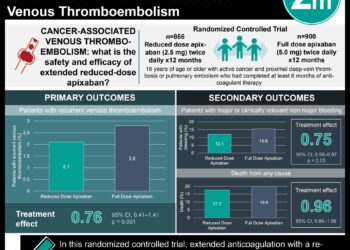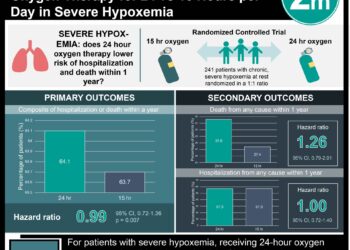Quick Take: Hospital volume and outcomes for acute pulmonary embolism
Patients with pulmonary embolism (PE) can present with a myriad of symptoms, and without prompt recognition and treatment, are at risk of developing life-threatening complications. The authors of this multinational population-based cohort study (n=39,257) aimed to evaluate whether an association exists between experience in the management of acute PE, based on hospital case volume, and mortality. Confirmatory testing for PE consisted of high probability ventilation-perfusion scintigraphy, positive computed tomography (CT) pulmonary angiography, or venous compression ultrasonography of the lower limb positive for proximal deep vein thrombosis (DVT) in patients presenting with chest symptoms. In comparing patients that were admitted to higher versus lower volume hospitals with acute PE, patients differed with respect to pre-existing medical conditions, physiological and laboratory measures. Patients admitted to higher volume centers were typically older and with more comorbid conditions. These patients also exhibited increased signs of clinical severity based on the simplified Pulmonary Embolism Severity Index (sPESI), tachycardia, hypoxemia and hypotension. Researchers found that patients admitted to hospitals in the highest quarter (>40 PEs per year) had a decreased odds of PE-related mortality at 30 days when compared to hospitals in the lowest volume quarter (<15 PEs per year) (OR 0.56, 95% CI 0.33 to 0.95, p=0.03). All-cause mortality at 30 days of follow-up, however, did not significantly differ (OR 0.78, 95% CI 0.50 to 1.22). There was also no significant difference in the odds of recurrent venous thromboembolism or major bleeding. This study therefore shows that in patients with acute PE, admission to a high volume center is associated with significant reductions in PE-related mortality at 30 days. The findings of this study may have important implications for the triage and transfer of high-risk patient subgroups.
Click to read the study in BMJ
Image: PD
©2019 2 Minute Medicine, Inc. All rights reserved. No works may be reproduced without expressed written consent from 2 Minute Medicine, Inc. Inquire about licensing here. No article should be construed as medical advice and is not intended as such by the authors or by 2 Minute Medicine, Inc.







